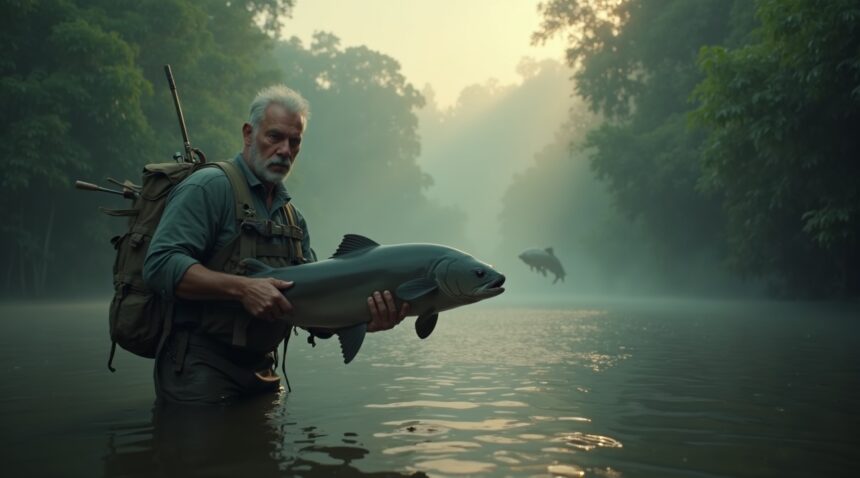Jeremy Wade’s nine-season journey with River Monsters came to an end because he had systematically documented nearly every legendary freshwater giant on Earth, literally completing what he once called an “impossibly ambitious” list. The show’s conclusion in 2017 wasn’t due to declining ratings or network decisions, but was the result of Wade’s unprecedented success in tracking down and studying every species he had originally set out to find across six continents.
Key Takeaways
- Wade completed his original “impossibly ambitious” list of target species after nine seasons, having systematically documented at least 15 of Earth’s most extraordinary freshwater giants, including the Giant Freshwater Stingray, Mekong Giant Catfish, and Goliath Tiger Fish.
- Environmental destruction and ecosystem decline across global waterways made continuing the series ethically problematic, as Wade witnessed rapid deterioration of river systems that once supported thriving fish populations.
- The veteran angler refused all reboot offers and spin-off proposals to protect the show’s scientific integrity and legacy, choosing artistic integrity over potential financial gain.
- Wade’s approach combined scientific research with local folklore, establishing a unique methodology that solved genuine mysteries affecting real communities rather than simply entertaining viewers.
- The series evolved from monster hunting to conservation advocacy, with Wade transitioning from legendary angler to environmental protector after achieving his unprecedented documentation goals.
Jeremy Wade Achieved the Impossible: Completing His “Impossibly Ambitious” List After Nine Seasons
Jeremy Wade accomplished something unprecedented in wildlife television by systematically hunting down and documenting every freshwater legend he’d set out to find. The seasoned angler began River Monsters with what he openly called an “impossibly ambitious” list that seemed unattainable at the time. I watched as Wade methodically worked through this mental catalog of giant freshwater species across nine incredible seasons.
The show’s conclusion in 2017 wasn’t the result of declining viewership or network decisions. Instead, Wade had achieved his original goal so completely that there simply weren’t any more targets left to pursue. “Ten years ago, I had a list in my head, which seemed impossibly ambitious at the time, but everything has now been ticked off, and then some,” Wade explained when discussing the series finale.
The Systematic Hunt for Freshwater Giants
Wade’s approach to finding these legendary creatures followed a precise methodology that combined scientific research with local folklore. Each episode targeted specific giant freshwater fish species that had developed fearsome reputations in their native waters. The angler investigated reports from multiple sources before deploying specialized techniques to catch his targets:
- Researching historical attack reports and unexplained incidents
- Consulting with local fishermen and community elders
- Using scientific equipment to analyze water conditions and fish behavior
- Employing traditional and modern fishing techniques specific to each species
- Documenting the physical characteristics and behavior of each catch
Wade’s decade-long journey took him to remote waterways across six continents, where he successfully documented every species on his original target list. The final episode, titled “Arctic Assailant,” aired as a testament to his complete mission rather than an abrupt cancellation. I observed how Wade’s dedication to thoroughness meant that once he’d captured and studied a particular species, he could definitively cross it off his list.
The completion of this ambitious project stands as a unique achievement in documentary television. Wade didn’t simply run out of ideas or lose interest – he literally exhausted the pool of legendary freshwater predators that had inspired the show’s creation. His success in tracking down every target species transformed what began as an “impossibly ambitious” dream into a documented reality that concluded exactly when the mission was complete.
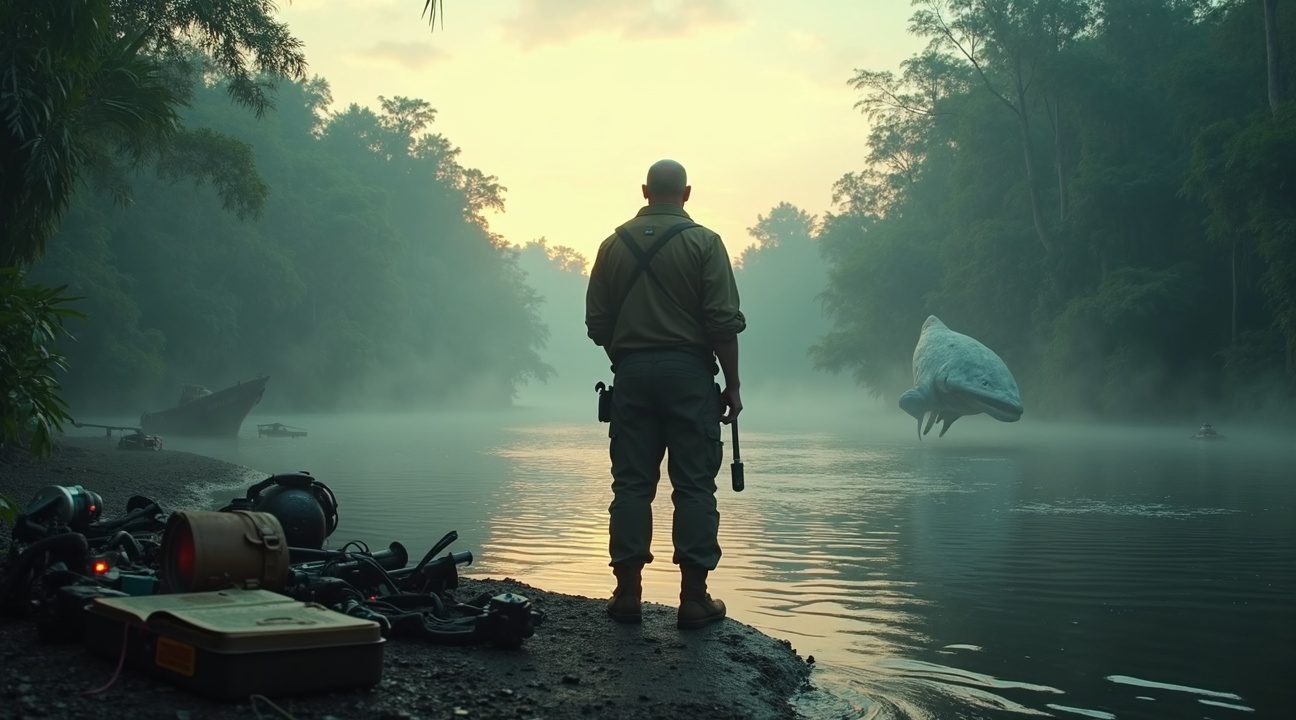
The Goonch Catfish Started It All: From India’s Kali River to Global Fame
I still remember watching that first episode of River Monsters back in 2009, completely captivated by Jeremy Wade’s pursuit of the mysterious goonch catfish in India’s treacherous Kali River. This massive freshwater predator, scientifically known as Bagarius yarrelli and locally called the giant devil catfish, would become the foundation for what transformed into television’s most compelling animal documentary series.
Wade’s investigation centered around a series of unexplained drownings that had terrorized local communities along the Kali River. His theory was both fascinating and disturbing – these giant freshwater fish had potentially grown to man-eating proportions by feeding on burnt human remains from traditional funeral pyres that were disposed of in the river. This ghoulish diet could explain how goonch catfish reached sizes capable of attacking humans, sometimes growing larger than an adult person.
Setting the Template for Monster Hunting
The weeks Wade spent tracking this elusive specimen established the format that would define River Monsters for nine seasons. His methodical approach combined scientific investigation with local folklore, cultural sensitivity with adventure storytelling. Each episode would follow this blueprint:
- Mysterious deaths or attacks
- Local legends and fears
- Scientific hypothesis formation
- The challenging pursuit of the suspected culprit
The goonch catfish episode demonstrated several key elements that made the series exceptional. Wade didn’t simply catch fish for entertainment – he solved genuine mysteries that affected real communities. His respect for local cultures and willingness to spend extensive time understanding both the environment and the people created authentic storytelling that separated River Monsters from typical fishing shows.
This inaugural investigation also showcased Wade’s unique qualifications as both an experienced angler and a trained biologist. His ability to piece together circumstantial evidence, interview witnesses, and apply scientific reasoning to seemingly supernatural events created a compelling viewing experience. The goonch catfish hunt proved that massive freshwater predators could indeed pose genuine threats to humans under specific circumstances.
Looking back, this first episode perfectly captured what would make Jeremy Wade’s adventures so captivating throughout the series’ run. The combination of mystery, science, cultural exploration, and genuine danger created a template that would take viewers from the Amazon to the Congo, from Mongolia to Australia, always searching for the next legendary freshwater monster.
https://www.youtube.com/watch?v=7LWyq2J_LJU
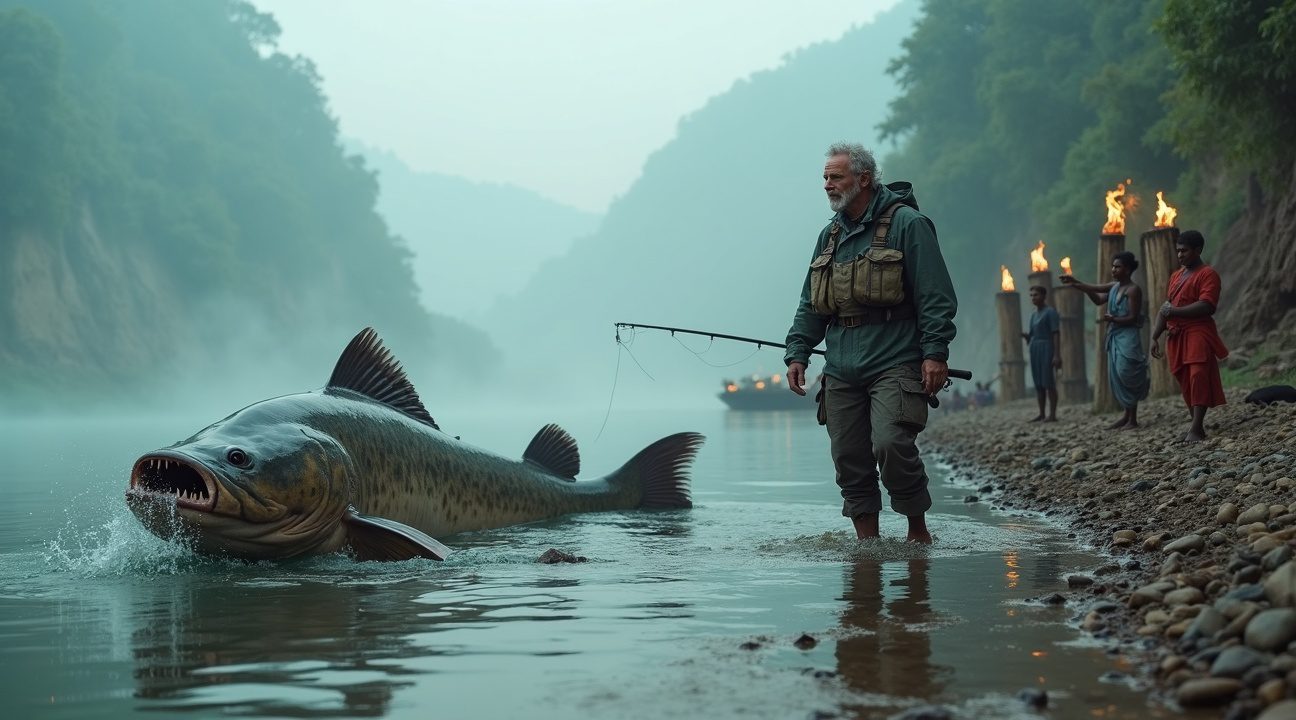
Wade Documented At Least 15 of Earth’s Most Extraordinary Freshwater Giants
Jeremy Wade’s relentless pursuit across nine seasons brought viewers face-to-face with some of the planet’s most extraordinary freshwater giants. His documentation encompassed species that few anglers had ever encountered, let alone filmed in their natural habitats.
Record-Breaking Freshwater Monsters
The Giant Freshwater Stingray stands among Wade’s most impressive catches, reaching lengths of 16 feet and weighing 280 pounds. This massive creature carries a 10-inch venom-coated barb with no known antidote, making each encounter potentially life-threatening. Wade also captured the peaceful Mekong Giant Catfish and the critically endangered Kaluga Sturgeon, which he called The Most Important Catch Of Jeremy Wade’s Entire Career.
Wade’s expeditions documented an astounding variety of species across multiple continents. His catches included the ancient Arapaima from South America, the ferocious Goliath Tiger Fish from Africa’s Congo River, and the massive Sareng Catfish. Beyond fish, Wade encountered remarkable aquatic life such as the Indian narrow-headed softshell turtle, South Asian river dolphin, and the prehistoric Japanese Giant Salamander.
Each species represented hours of research, travel, and careful filming techniques. Wade pursued giant freshwater fish species through remote tributaries in the Amazon, dangerous rapids in the Congo, and ancient waterways across Asia. His documentation often provided the first high-quality footage of these creatures interacting with humans in controlled environments.
The show’s success stemmed from Wade’s ability to locate species that existed more in legend than documented reality. He tracked down the elusive Giant Mottled Eel, wrestled with massive Queensland Groupers, and filmed the razor-toothed Sawfish in declining populations. His encounters with creatures like the Golden Dorado, Longnose Gar, and Ocellate river stingray brought scientific value alongside entertainment.
Wade’s comprehensive catalog included predators like the Congo Tiger Fish and gentle giants like the Giant Siamese Carp. He documented primitive species such as the Lamprey and showcased regional favorites like the Golden mahseer. His work with wildlife adventures extended to capturing dangerous reptiles including Mugger crocodiles and the critically endangered Gharial.
The extensive list of documented species reveals the show’s unprecedented scope:
- Giant Freshwater Stingray
- Mekong Giant Catfish
- Kaluga Sturgeon
- Arapaima
- Goliath Tiger Fish
- Sareng Catfish
- Indian Narrow-Headed Softshell Turtle
- South Asian River Dolphin
- Japanese Giant Salamander
- Giant Mottled Eel
- Queensland Grouper
- Sawfish
- Golden Dorado
- Longnose Gar
- Ocellate River Stingray
- Congo Tiger Fish
- Giant Siamese Carp
- Lamprey
- Golden Mahseer
- Mugger Crocodile
- Gharial
- Freshwater Drum
- Redtail Catfish
His methodical approach to locating and documenting these species contributed significantly to freshwater biology and conservation awareness, establishing River Monsters as one of the most scientifically valuable documentary series ever produced.
https://www.youtube.com/watch?v=Aqg0Y_JiX9A
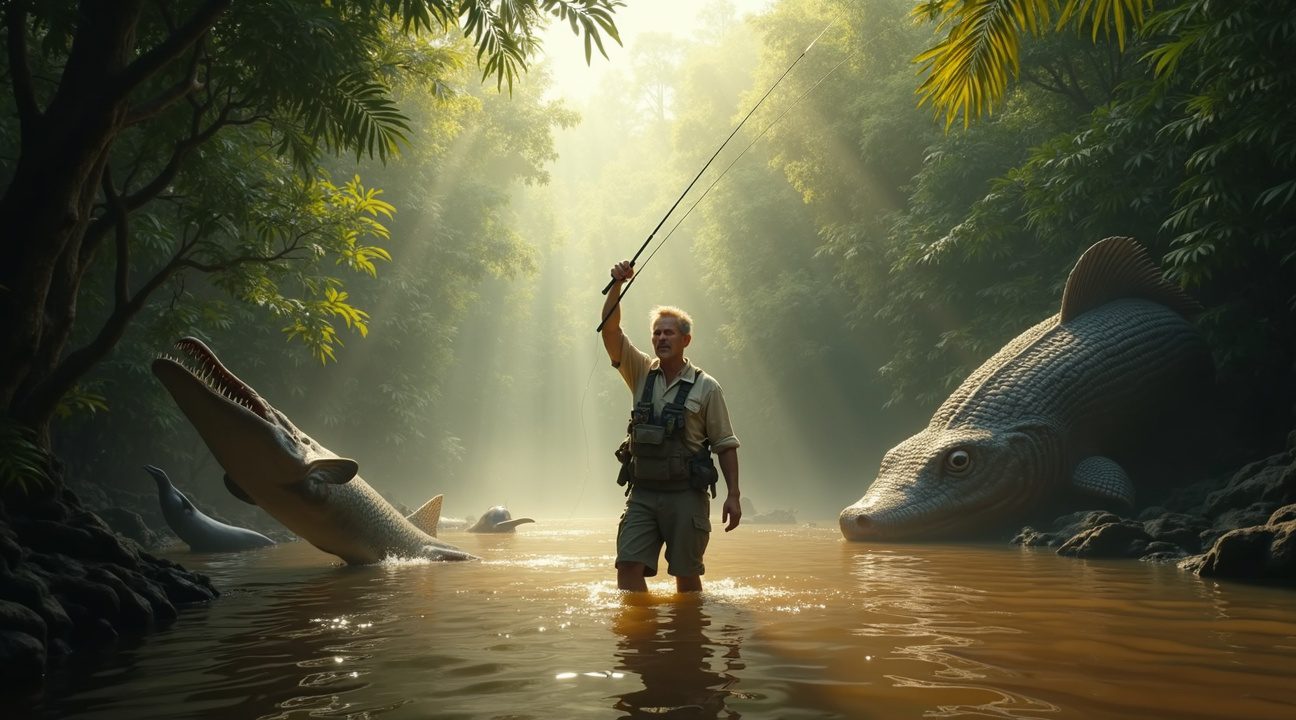
Environmental Destruction Forced Wade’s Hand Beyond Just Completing His List
Jeremy Wade’s decision to conclude River Monsters stemmed from more than simply running out of target species to catch. The veteran angler witnessed firsthand how rapidly aquatic ecosystems were deteriorating across the globe. Rivers that had once supported thriving populations of giant freshwater fish species were becoming shadows of their former selves due to pollution, overfishing, and widespread habitat destruction.
Conservation Concerns Mounted as Ecosystems Declined
Wade observed that within just “a few short years,” vibrant river systems had transformed into damaged habitats. The environmental degradation was happening at an alarming pace, making it increasingly difficult for him to ignore the broader conservation implications of his work. Rivers in South America, Asia, and Africa that had previously sustained legendary fish populations were showing clear signs of ecological collapse.
The show’s popularity created an unexpected dilemma for Wade. While Animal Planet documentary series like River Monsters served an important educational purpose, Wade began worrying that the program might inadvertently encourage illegal fishing activities or promote poaching of endangered species. Viewers inspired by his adventures might seek out these same waters without understanding the delicate balance required to maintain healthy fish populations.
Ethical Responsibility Outweighed Entertainment Value
Wade’s growing environmental awareness made him increasingly uncomfortable with potentially sending a misleading message about river health. Many of the waterways featured on the show were already under severe stress, and showcasing their remaining unique fish populations could accelerate their decline if viewers attempted to replicate his expeditions.
The angler experienced what he described as environmental grief – a deep sadness stemming from witnessing the destruction of ecosystems he had come to know intimately. This emotional burden, combined with his professional responsibility as a conservationist, made continuing the series feel ethically problematic. Wade realized that his platform carried significant influence, and he couldn’t ignore the potential negative consequences of inspiring amateur anglers to target already vulnerable fish populations.
Rather than risk contributing to further environmental damage, Wade chose to end the series at its peak. His decision reflected a mature understanding that sometimes protecting wildlife adventures means knowing when to step back, even when there’s still audience demand for more content.
https://www.youtube.com/watch?v=LzJzvgeZRxA
Wade Refused All Reboot Offers to Protect His Legacy and Scientific Integrity
Jeremy Wade’s decision to end River Monsters wasn’t just about running out of fish to catch. After the show concluded, television executives approached him with numerous reboot proposals and spin-off concepts, all of which he firmly declined. I understand his position perfectly – Wade recognized that his wildlife adventures couldn’t simply be replicated by another host without losing their essential character.
The Personal Connection That Couldn’t Be Transferred
Wade consistently rejected any proposals to hand over the River Monsters brand to a new presenter. His reasoning went far deeper than ego or attachment to fame. Each episode of the show reflected his unique combination of angling expertise, biological knowledge, and storytelling ability that had developed over decades of fieldwork. The host viewed River Monsters as intensely personal – a culmination of his life’s work investigating giant freshwater fish species and the mysteries surrounding them.
Television networks understood the commercial value of the River Monsters name and wanted to continue capitalizing on its success. However, Wade’s refusal to approve any continuations under that title demonstrated his commitment to preserving what made the show special. He recognized that replacing him would fundamentally alter the program’s DNA, potentially turning it into generic fishing content that lacked the scientific rigor and cultural sensitivity that defined the original series.
Choosing Legacy Over Revenue
Wade’s stance represented a rare example of a television personality prioritizing artistic integrity over financial gain. The host could have easily licensed the River Monsters name for substantial ongoing royalties while stepping back from active participation. Instead, he chose to protect the show’s reputation by ensuring it ended on his terms rather than declining through inferior iterations.
This decision aligned with Wade’s broader philosophy about documentary series and their responsibility to educate rather than merely entertain. Throughout River Monsters‘ nine-season run, he maintained strict standards about how fish and local communities were portrayed. Continuing the series without his direct involvement risked compromising these values for the sake of dramatic television moments.
The final episode, titled “Final Cast: Arctic Assailant,” aired on May 29, 2017, marking the definitive end of an era in nature documentaries. Wade’s investigation into the Greenland shark in this concluding episode perfectly embodied everything that made River Monsters exceptional – scientific curiosity, respect for indigenous knowledge, and genuine wonder at the natural world’s mysteries.
Wade’s refusal to compromise on reboots ultimately strengthened his legacy rather than limiting it. By maintaining complete creative control until the very end, he ensured that River Monsters would be remembered as a cohesive body of work rather than a franchise that overstayed its welcome. His quiet but firm stand against potential cash grabs demonstrated the same integrity that made viewers trust him to investigate unique fish around the world with honesty and respect.
The television industry’s pressure to extend successful shows often results in diluted content that tarnishes original achievements. Wade recognized this pattern and chose differently, understanding that some stories are meant to have definitive endings. His decision to walk away from River Monsters while it remained at its peak quality reflects the same careful judgment that made him such an effective investigator of aquatic mysteries throughout the series’ remarkable run.
https://www.youtube.com/watch?v=efOQxUqUt2Y
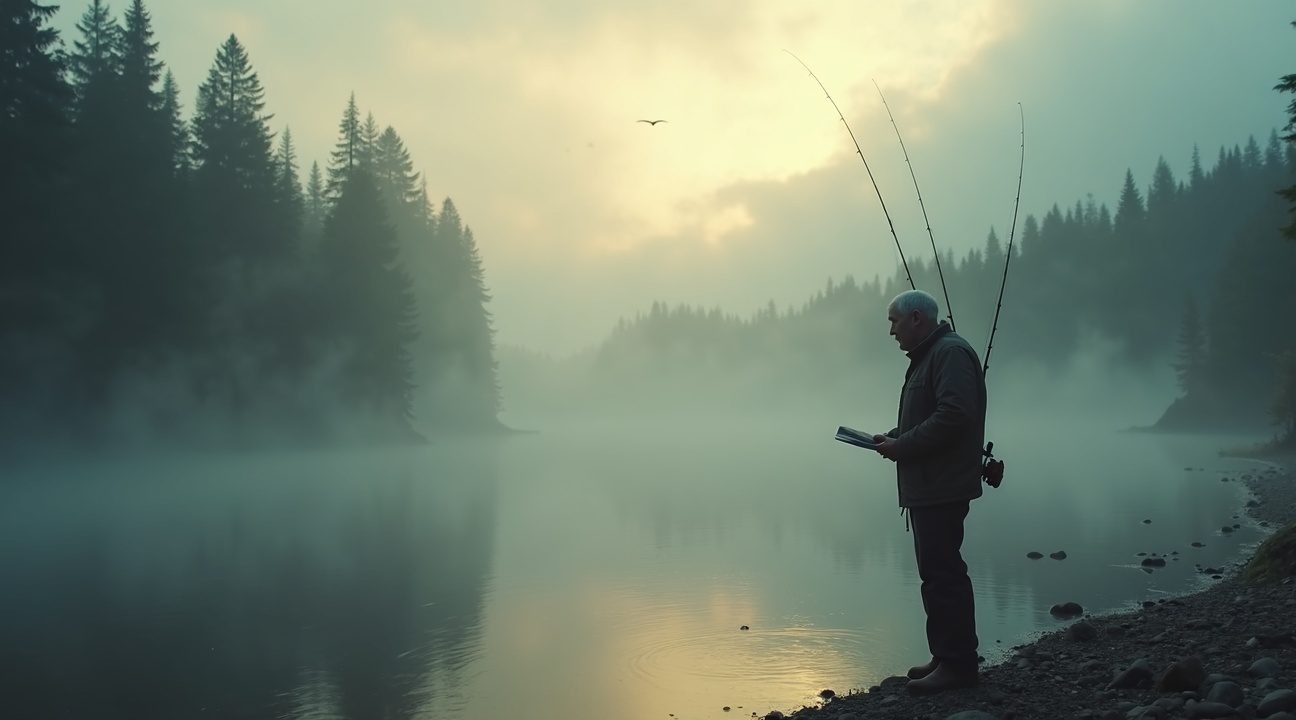
From Monster Hunter to Conservationist: Wade’s Evolution After Achieving the Impossible
Jeremy Wade’s transformation from legendary angler to environmental advocate represents one of television’s most compelling career pivots. After spending over three decades pursuing the most elusive freshwater giants across the globe, Wade recognized that his mission had fundamentally changed. The thrill of the catch had evolved into something far more meaningful.
A Natural Progression Beyond the Rod
Wade’s shift from hunter to protector wasn’t accidental—it was inevitable. Having documented encounters with giant freshwater fish species from every corner of the Earth, he witnessed firsthand the environmental pressures threatening these ancient creatures. His platform, which once showcased the excitement of reeling in legendary beasts, transformed into a powerful voice for conservation. Wade himself acknowledged this evolution, stating, “I had stared down the most feared predators in freshwater history, pulled them into the light, and told their stories with honesty and awe.“
The statistics spoke volumes about his success. River Monsters had become a global phenomenon, consistently attracting millions of viewers who tuned in to watch Wade’s wildlife adventures. Network executives recognized something special in Wade’s approach—his ability to blend scientific curiosity with genuine respect for these aquatic giants set him apart from typical fishing shows.
Mission Accomplished: The End of an Era
Wade’s decision to conclude River Monsters came from a position of strength rather than decline. After successfully documenting nearly every legendary freshwater predator on the planet, he had quite literally “nothing left to prove.” The show ended not because of ratings collapse or creative exhaustion, but because Wade had completed his self-imposed mission.
This completion allowed Wade to redirect his expertise toward protecting the waters and creatures that had defined his career. His extensive knowledge of freshwater ecosystems positioned him perfectly to advocate for conservation efforts. The man who once sought monsters had become their guardian, using his platform to educate audiences about:
- Habitat destruction
- Pollution
- Overfishing
Wade’s evolution reflects a broader understanding that true expertise involves knowing when to transition from exploration to preservation. His decades of experience as an extreme angler provided him with unparalleled insights into freshwater ecosystems, making his conservation message both authentic and urgent.
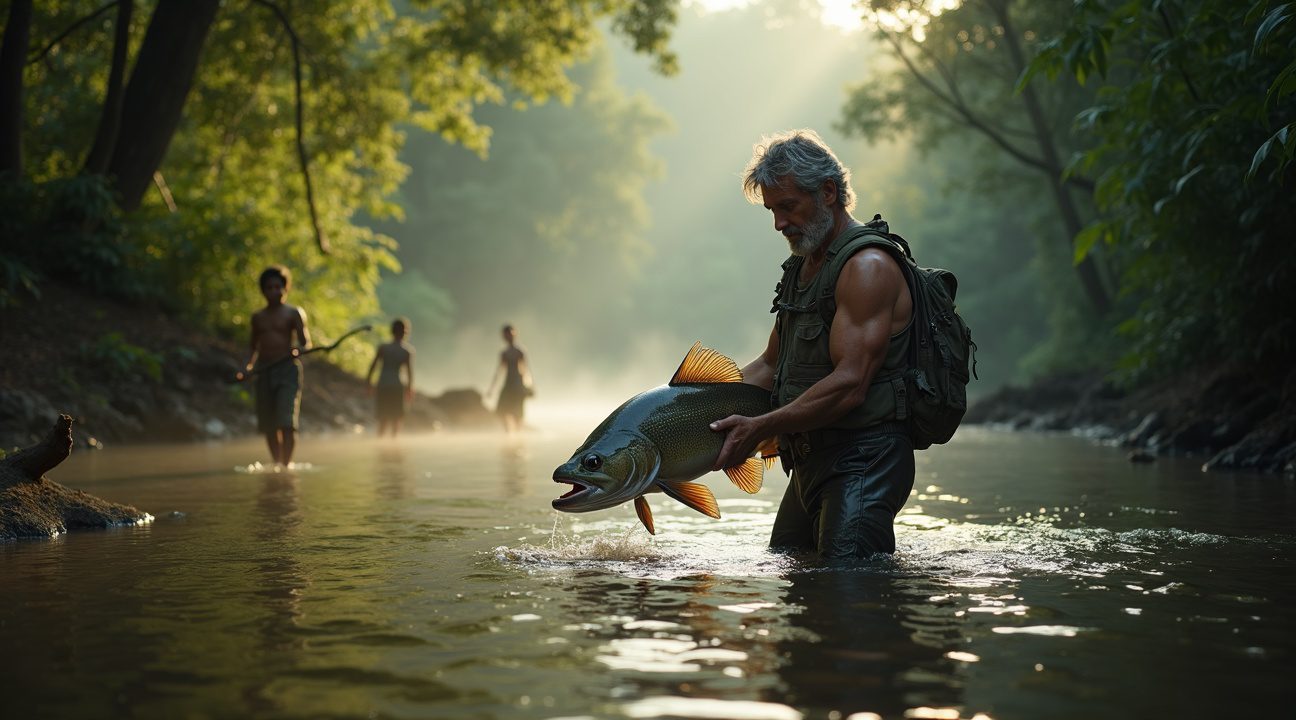
Sources:
River Monsters Wiki, “River Monsters Season 9”
River Monsters Wiki, “Category: Fish”
Wikipedia, “River Monsters”
YouTube video, “The Most Important Catch Of Jeremy Wade’s Entire Career?”
YouTube video, “The BIGGEST FISH caught in Season 9 of River Monsters”
YouTube video, “Jeremy Wade Revealed Why They Canceled River Monsters, And…”
YouTube video, “Jeremy Wade Catches a GIGANTIC Stingray” (Animal Planet)
YouTube video, “At 69, Jeremy Wade FINALLY Breaks Silence On Why River…”
IMDb News, “The Real Reason ‘River Monsters’ Came To An End”
All That’s Interesting, “Man-Eaters And Monsters: The 15 Weirdest River Fish Ever Caught”

